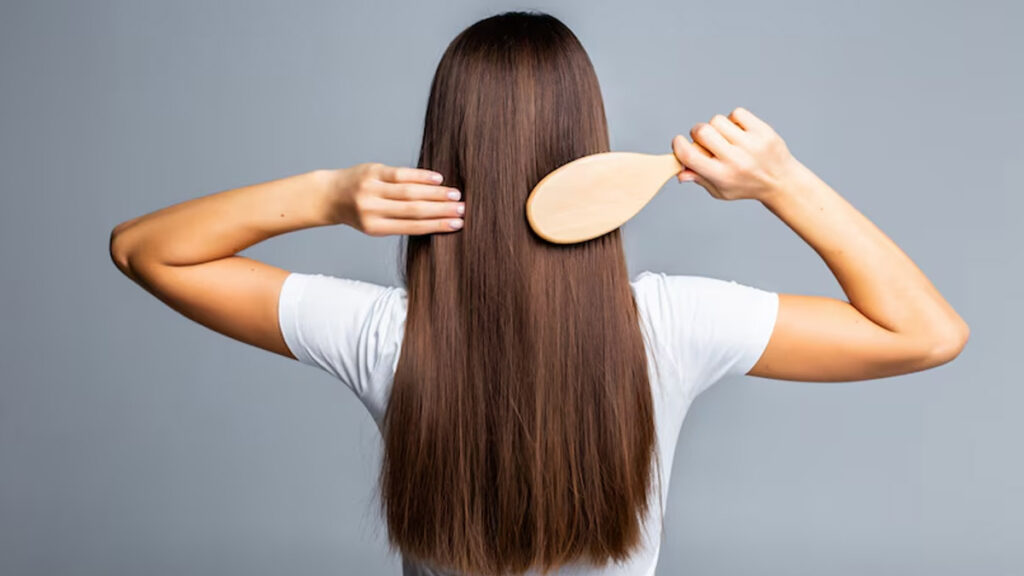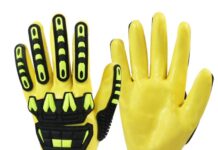Discover the ultimate hair care guide with simple tips, routines, and habits to keep your hair healthy, strong, shiny, and beautiful for both men and women.

Are you ready to give your hair the care it deserves? Whether you are hoping for faster growth, more shine, or healthier strands after years of coloring, you are in the right place. Taking care of your hair does not have to be complicated; it just needs a little consistency and the right approach. Building a hair care routine can make a huge difference in how your hair looks and feels. With the right products and a few simple steps, you will start seeing real results. So, let’s walk you through everything you need to know to keep your hair looking strong, healthy, and beautiful.
Let’s get started on your journey to better hair!
Top hair care routine for healthy hair
A good hair care routine includes six key steps: hair oiling, exfoliation, cleansing, conditioning, treatment, and styling. Here is a closer look at each step.
Step 1: Nourish with a hair oil massage
Oiling is one of the most important steps in any hair care routine. When done properly, it can completely transform the health and appearance of your hair. Hair oil massage is a traditional practice known for strengthening roots and deeply nourishing hair cuticles. It promotes thicker, longer, and healthier hair over time. Massaging oil into the scalp helps improve blood circulation, which supports hair growth while reducing hair loss and thinning. It also hydrates and softens the scalp, keeping dryness and flakes at bay.
Here is why hair oiling is a must:
- Boosts blood flow to the scalp, helping reduce hair fall and encourage growth
- Nourishes the scalp and lubricates strands for stronger, shinier hair
- Locks in moisture, improving hair texture and reducing breakage
- Keeps scalp hydrated and flake-free
The key is choosing the right oil. Depending on your hair type and weather, you can go for natural oils like coconut, olive, avocado, sesame, or onion.
How to apply hair oil for better absorption into the scalp?
Start by warming a few drops of hair oil between your palms. Rub it gently between your fingers for a few seconds, then apply it to your scalp. Use your fingertips to massage the oil in circular motions, helping it absorb better and boost blood circulation. Spread the remaining oil through the lengths of your hair. For best results, leave the oil in for a few hours before washing it off. If you have an oily scalp or live in a humid climate, limit oiling time to around 30 minutes to avoid clogged follicles and dandruff buildup.
Step 2: Exfoliate your scalp
Oil, dirt, and product buildup can clog your hair follicles. This can lead to dandruff, hair fall, and even fungal infections. While shampooing helps remove surface-level impurities, regular scalp exfoliation goes deeper. It helps clear out pollution, grime, excess oil, and dead skin cells that build up over time. For those with oily or dandruff-prone scalps, using a scalp scrub once or twice a month is highly recommended. It deeply cleanses the scalp, improves circulation, and creates a healthier environment for hair growth.
To use a scalp scrub, start by sectioning your hair evenly. Apply the scrub directly to your scalp, focusing on each section. Gently massage it using your fingertips or a scalp brush for a few minutes. This boosts circulation and loosens buildup. Rinse thoroughly and follow with a mild, hydrating shampoo.
How to choose the right scrub?
When choosing a scalp scrub, look for one that includes moisturizing ingredients to avoid drying out the scalp. Always opt for scrubs that are free from harsh chemicals or sulfates to protect your scalp’s natural balance.
Step 3: Cleanse your scalp
Your hair needs proper cleansing, just like your skin. Using the wrong methods can lead to hair fall, split ends, and damage, affecting the overall health and strength of your hair.
How should you cleanse your hair?
To cleanse your hair properly, start by wetting it thoroughly. Take a coin-sized amount of shampoo or more. This depends on your hair length. Then gently massage it into your scalp using your fingertips or a scalp massager. Spend 1-2 minutes working the shampoo in to stimulate circulation and lift dirt. Now, spread the foam along the length of your hair and rinse thoroughly with warm water. Repeat if needed for a deeper clean.
A helpful tip is to avoid washing your hair every day. Daily washing can strip your scalp of natural oils, leaving your hair dry and rough. Generally, washing your hair two to three times a week is enough to keep it clean and healthy. However, if you spend a lot of time outdoors or engage in sports or physical activities that make your scalp sweaty, you might need to wash more frequently to keep your hair fresh and balanced.
Step 4: Condition your hair
Whether you are creating a hair care routine for men or women, using a conditioner is essential. Conditioners play a key role in restoring moisture to your hair and making it easier to manage. They help lock in hydration, which prevents common issues like split ends, frizz, and dryness. This results in smoother and softer hair that is easier to style and maintain.
After shampooing, apply a nourishing conditioner evenly along the lengths of your hair. Focus on the mid-lengths and ends, avoiding the roots to prevent greasiness. Leave the conditioner on for about 2 minutes to allow it to work before rinsing thoroughly with water.
Should you go for hair masks?
For dry, damaged, or rough hair, consider adding a weekly hair mask to your routine. Hair masks provide deep conditioning by penetrating further into your strands, delivering intense nourishment from within. This extra care can help repair damage, improve texture, and bring back your hair’s natural shine and strength. Incorporating conditioner and hair masks will keep your hair healthy and hydrated, looking its best.
Step 5: Proper treatment
If you face specific hair concerns like dandruff, damaged, or chemically treated hair, adding targeted treatments to your routine can make a big difference. For dandruff and flaking, using a dandruff serum can help soothe your scalp and reduce flakes as well as control irritation. These serums often contain ingredients that fight the underlying causes of dandruff, promoting a healthier scalp.
For those with chemically treated or damaged hair, bond treatments are an excellent option. These treatments work by repairing and strengthening the hair’s structure. They help soften rough strands and smooth frizz, and can even reverse some of the damage caused by coloring, bleaching, or heat styling. Bond treatments restore resilience and shine, making your hair look healthier and more manageable.
However, it is important to identify your specific hair concern before adding any hair treatments to your routine. Consulting a dermatologist or hair care professional is highly recommended to ensure you choose the right products and avoid further damage. With the right treatment and guidance, you can effectively care for your hair’s unique needs and restore its natural beauty.
Step 6: Style your hair
The final step to getting beautiful and healthy hair is proper styling. The best way to protect your hair’s health is to let it air dry naturally. Regular use of hair dryers or blow-drying tools can damage the hair cuticle, leaving your strands limp, dull, and brittle over time.
After gently towel drying your hair, apply a hair serum to lock in moisture and keep your hair smooth. Serums help reduce frizz and flyaways, giving your hair a polished and sleek look. Be sure to focus the serum on the tips of your hair, where split ends are most likely to develop. Use serum regularly after every wash or whenever you style your hair. This can improve the overall texture and appearance. You can keep your hair strong, shiny, and manageable, by choosing gentle drying methods and using nourishing styling products. This will help you maintain that gorgeous mane day after day.
Best hair care tips
A proper hair care routine is important, but good habits matter just as much. Follow these simple hair care tips to help you achieve beautiful, healthy, and long-lasting hair that you will love.
- Careful brushing and detangling:
To prevent hair breakage and protect your roots, always use a wide-tooth comb when detangling knots. Start from the ends of your hair and gently work your way up to the roots. This method reduces stress on your strands and minimizes damage, making detangling smoother and less painful.
It is also important to avoid over-brushing your hair. While brushing does help stimulate blood circulation to the scalp, which supports healthy hair growth, too much can have the opposite effect. Excessive brushing can weaken your roots, cause hair fall, and damage the hair shaft. Stick to brushing your hair just enough to keep it smooth and tangle-free, ideally once or twice a day. This balance helps maintain healthy hair without causing unnecessary strain or breakage. Using gentle techniques and the right tools ensures your hair stays strong and healthy over time.
- Limit heat styling:
Heat styling tools like straighteners and curling irons can cause significant damage to your hair if used too often. Try to minimize how often you use these tools to protect your strands. When you do use them, always set the temperature to the lowest effective heat to reduce damage.
Before applying any heat, use a heat-protectant serum or spray on your hair. This creates a barrier that shields your strands from the harmful effects of heat, preventing dryness, breakage, and split ends. Taking these simple steps helps keep your hair healthy, strong, and looking its best over time.
- Rinse with cold water:
Warm water feels great for washing your hair, but experts suggest finishing with a cold water rinse. Hot water during shampooing opens up your hair cuticles and can leave your strands vulnerable to dryness and split ends. When the cuticles are open, moisture escapes more easily and causes your hair to lose its natural shine and strength. Rinsing with cold water at the end helps to close the hair cuticles, locking in moisture and nutrients. This simple step helps your hair retain its natural luster, making it look healthier and shinier. Adding cold water rinse to your routine is an easy way to boost hair health and keep your locks looking their best.
- Regular trims:
Many people believe that regular trimming makes hair grow faster, but that is actually a myth. Trimming does not speed up hair growth; instead, it helps keep your hair healthy by removing damaged ends. Split and rough ends can travel up the hair shaft, leading to breakage and further damage. This makes your hair look unhealthy and uneven. Getting regular trims every 4 to 8 weeks prevents this damage from spreading, keeping your hair strong and smooth. Trimming helps maintain the overall health and appearance of your hair, allowing it to grow without interruption from breakage. So, while trimming won’t make your hair grow faster, it ensures that your locks stay in the best possible condition as they grow longer.
- Avoid touching your hair frequently:
Try to avoid touching your hair too often. Both your hair and hands have natural oils, and constantly running your fingers through your hair or pushing it away from your face can cause it to look greasy faster. This frequent contact spreads oils and dirt, making your hair appear less fresh. To prevent this, consider getting a manageable haircut that stays in place and feels comfortable throughout the day. A style that suits your lifestyle will reduce the need to constantly adjust your hair, helping it stay cleaner and healthier for longer.
- Maintaining a balanced lifestyle:
A healthy hair care routine alone will not guarantee thick, vibrant hair; your lifestyle and diet play a huge role too. To keep your hair looking its best, it is important to take care of your overall well-being.
Avoid habits like smoking and excessive drinking, as these can lead to hair loss, balding, and premature greying. Instead, focus on eating a balanced diet packed with nutrients that support hair health. Foods rich in protein, iron, and vitamins B, C, and E help nourish your hair from within. Staying hydrated is just as important. Drinking enough water keeps your body and scalp hydrated, which adds natural shine and strength to your hair. Stress can also affect your hair’s health, so managing stress through relaxation techniques like yoga or meditation can make a big difference. Taking care of your body and mind will help your hair stay healthy and full of life.
- Discover your perfect hairstyle:
How you style your hair plays a big role in its health. Avoid wearing tight ponytails or buns for long periods, as they can cause hair loss and damage. It is important to give your hair breaks from tight styles and opt for loose braids while sleeping. Sleeping with wet hair should be avoided since it can lead to dandruff and scalp infections. Brushing wet hair or tying it tightly can also cause breakage. Protect your hair from sun damage by wearing a cap or scarf outdoors. Switching from rubber bands to satin or silk scrunchies helps reduce hair breakage. Additionally, using satin or silk pillowcases and microfiber towels supports stronger and healthier hair.
These are some non-negotiable steps and tips you need to follow if you want shiny and healthy hair!



















